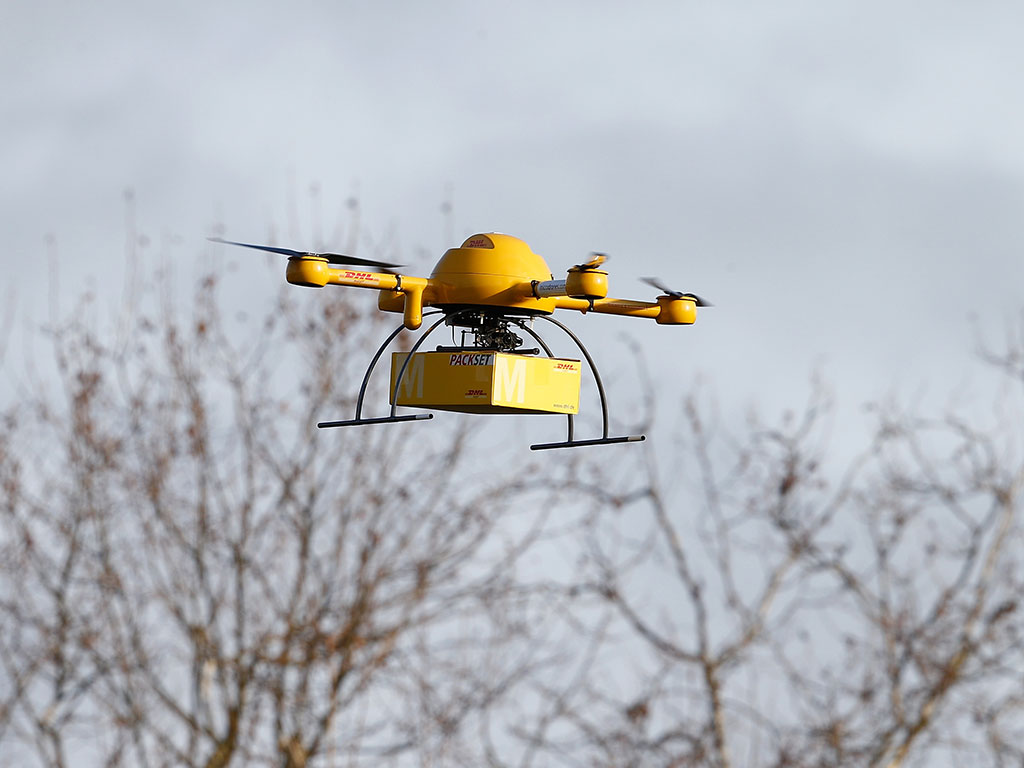Digital technologies are enabling breakthrough research to be carried out at an astounding pace in healthcare – research that’s leading to a more precise understanding of patient needs across a wide spectrum of disease states, and enabling more effective therapies and more comprehensive, tailored care. As a result, new forms of digitally enabled services and solutions are improving, becoming more functionally effective and more cost-effective to deploy at scale. What’s more, governments, providers, payers, and pharmaceutical and medical device companies are leveraging these developments, exploring new approaches, strategies and business models to spark a major improvement in health and healthcare. At the same time, however, this increasing array of treatment paths can be overwhelming for healthcare providers and their patients, particularly for the growing number of people who are suffering from complex and enduring conditions such as chronic heart failure.
Partnership is needed among and across the various healthcare stakeholders to use real-world data and evidence to determine which patients gain the most benefit from which interventions, and how those decisions might change with new forms of post-acute and post-discharge care coordination. It’s critically important that teams of provider systems, payers, and pharmaceutical and medical device companies work together to improve patient care and maximise the opportunities presented by current and evolving technologies.
Organisations such as the International Consortium for Health Outcomes Measurement are on the case; they are committed to unlocking the potential of value-based healthcare. But even with this organisation’s increasing presence and support, change won’t be easy for stakeholders shifting to a value-based healthcare environment.
Collaborative approach
Boston Scientific has had the good fortune to work with some of the world’s leading institutions towards the goal of defining what best practices for the next generation of healthcare might look like. A good example is the care of patients with chronic heart failure, which has been identified as one of the costliest disease states to manage. In Europe, heart failure accounts for about two percent of healthcare spending, and results in average hospital stays of 11 days. Many of these costly stays are readmissions, which raises the question: is there a way to help patients stay out of the hospital after receiving treatment for heart failure? To answer, we embarked on a research project in collaboration with global life sciences service provider Accenture, and some of the leading institutions in Scandinavia and the UK, to assess the current state of care delivery for heart failure patients and to identify opportunities for improvement at each hospital.
The work resulted in the development of a cloud-based, data-driven digital solution that will become part of our growing Advantics portfolio of innovative healthcare solutions. Essentially, the solution gives providers more robust and timely insights into their patient populations, so they can make better and more proactive decisions designed to improve the care patients receive, both while they are in the hospital and after they are discharged. To do this, it relies on Accenture’s analytics insights platform to monitor three key measurements: patient engagement (the content and tools to support patients as they self-manage their condition); care coordination (the technology platform to enroll and consistently follow up with patients post discharge); and pathway analytics (the dashboards to track heart failure patient outcomes and financial impact).
Partnership is needed among and across the various healthcare stakeholders to use real-world data and evidence to determine which patients gain the most benefit from which interventions
Maria Stewart, Vice President for Health Economics and Medical Affairs at Boston Scientific, said of the project: “We know it isn’t good enough for innovative technologies to only improve clinical scenarios; they have to be sustainable in the real world as well. They have to improve patient outcomes and offer economic value to healthcare systems.”
This fundamental outlook drove the project, particularly at Tampere Heart Hospital, a full-service centre with multidisciplinary heart teams providing services throughout Finland and beyond. Dr Kari Niemelä, CEO, noted: “The collaboration with Boston Scientific identified significant opportunities to increase provider collaboration and improve the quality of care that patients experience when coming to our hospital. For example, we found a 25 percent unnecessary heart failure readmission rate, and therefore a definite need for better care coordination, supported by modern technology and processes that can decrease overall costs.”
Dr Jeff Elton, Managing Director of Accenture Strategy and global lead for the predictive health intelligence and patient health practices at Accenture, shares this view: “Realising value is a function of recognising early what is best for a patient, preparing the institution and the patient for what needs to be done, and better equipping and partnering with the patient for self-care and self-management once they are discharged. That’s extremely difficult – if not impossible – for any single organisation to do on its own, especially in this day and age. And so it really has to be a journey undertaken with partners that bring their own capabilities and distinctive talents to the table, and share the relentless perseverance it takes to succeed.”
At Boston Scientific, this initiative has helped advance a patient-care-services approach to our work, in addition to our focus on developing medical devices. We know we can contribute to achieving the best possible clinical and economic outcomes in a variety of ways, with our medical device innovation and with digitally fuelled solutions. This collaboration was less about developing a particular product and more about figuring out how to enable a hospital to treat many more patients in a better way, while being extremely conscious of the current cost structure and the need to reduce costs where possible.
Catheterisation lab innovation
Tampere Heart Hospital has been pursuing other ways to improve patient services, for example through the continuous improvement programme it has implemented in its catheterisation lab for cardiac rhythm management patients.
Tampere has limited resources, a constrained budget, and limited experience with change management initiatives. In 2013, its leaders committed to finding a way to build continuous improvement into its operations. Focusing on the lab, they wanted to be able to treat more patients while improving its outcome/cost ratio at the same time. If their efforts were successful, they could extend this work across other areas over time.
The project began with a complete analysis of the lab’s infrastructure and processes. Here, Boston Scientific was again able to contribute. Working alongside Tampere senior staff as part of a team called Tahti (the Finnish word for ‘pacing’), we began with a workshop to identify opportunities to optimise patient flow.
The workshop generated 29 improvement ideas that Tampere has since pursued, including: redesigning the elective patient process to create a more efficient patient flow (targeted improvements included rigorous on-time procedure starts, preparation of the lab and procedure details the day before, and clearer processes for scheduling elective activity and managing the emergency caseload); improving patient treatment plans (in particular, ensuring named staff are allocated to each treatment, preventing any gaps or uncertainties); and using whiteboards to track employee satisfaction (staff members logged their mood at the end of each day, and started each new day with a ‘huddle’ to review status and discuss improvement ideas).
Tampere also articulated its strategic goals in terms of actionable, measureable activities. Specifically, over a seven-year period, the Heart Hospital determined to: increase the number of pacemaker patients treated by 30 percent; reduce the number of patient follow-up appointments required by 50 percent; and improve procedure process flow, reducing the total time patients spend in the lab by 20 percent.
After six months, the lab had a robust process in place to measure and share performance data. Staff satisfaction levels had also improved, largely as a result of clearer objectives, roles and responsibilities. And, after a year, the number of pacemaker patients treated had increased by nine percent, while those requiring follow-up appointments had decreased by 14 percent.
Looking ahead, Tampere plans to broaden responsibility for improvement activity. Teams of doctors and nurses will begin working on various initiatives, guided by experienced Tahti project coaches, who will also pursue training in lean Six Sigma tools and principles.
Device innovation
Partnerships and collaborative relationships are the key to a truly transformed healthcare landscape. However, that doesn’t mean companies like ours should spend any less time focusing on our traditional core: medical devices. This area holds endless promise to improve patient outcomes and deliver cost savings over the longer term.
The Watchman left atrial appendage (LAA) closure device, designed to reduce the risk of strokes in patients with non-valvular atrial fibrillation (AF), provides a good example of delivering value to both patients and healthcare systems. The Watchman device was designed to be an alternative to long-term warfarin therapy. Implanted in a patient’s heart, it works by closing the LAA, which is believed to be the source of a majority of stroke-causing blood clots in people with non-valvular AF. By closing off the LAA to prevent the migration of blood clots, the risk of stroke may be reduced and, over time, patients may be able to stop taking anticoagulants. The Watchman device was demonstrated to be non-inferior to warfarin for ischemic stroke reduction and superior for haemorrhagic stroke and all-cause mortality. Among patients studied, more than 90 percent were able to discontinue warfarin use after 12 months. A recent economic analysis has also demonstrated that the Watchman device can be a cost-effective and cost-saving alternative to warfarin.
“For those high-risk patients with non-valvular AF who are doing well on warfarin or other blood thinners, those drugs can be life-enhancing and life-saving”, said Dr Kenneth Stein, Chief Medical Officer for Rhythm Management at Boston Scientific. “However, for those patients who are poor candidates for long-term blood thinners and who have a rationale to seek an alternative, the Watchman device is the only device-based alternative whose safety and efficacy are proven in multicentre randomised clinical trials. In addition, we expect the device to offer economic value to healthcare systems by avoiding the costly complications of stroke and of bleeding complications due to blood thinning medications.”
Sense of duty
We see it as Boston Scientific’s responsibility to develop more and better disease management solutions that lower the costs of delivering care, reduce readmissions, and support the complicated task of patients self-managing their care. It is also our responsibility to pursue collaborations with these goals in mind. We’re gratified by the successes we have achieved, but this is not a time for complacency. Healthcare systems and people are always more complicated than any analysis will reflect, but there are outcomes we can achieve and there is value accessible to us today that remains unclaimed.
We are continuing to focus on digital medical technologies and solutions, and we’re committed to doing so in close collaboration with our customers and partners. There’s never been a better time to be in the business we’re in. Working together, we can make a positive and sustainable difference for providers and patients around the world.


